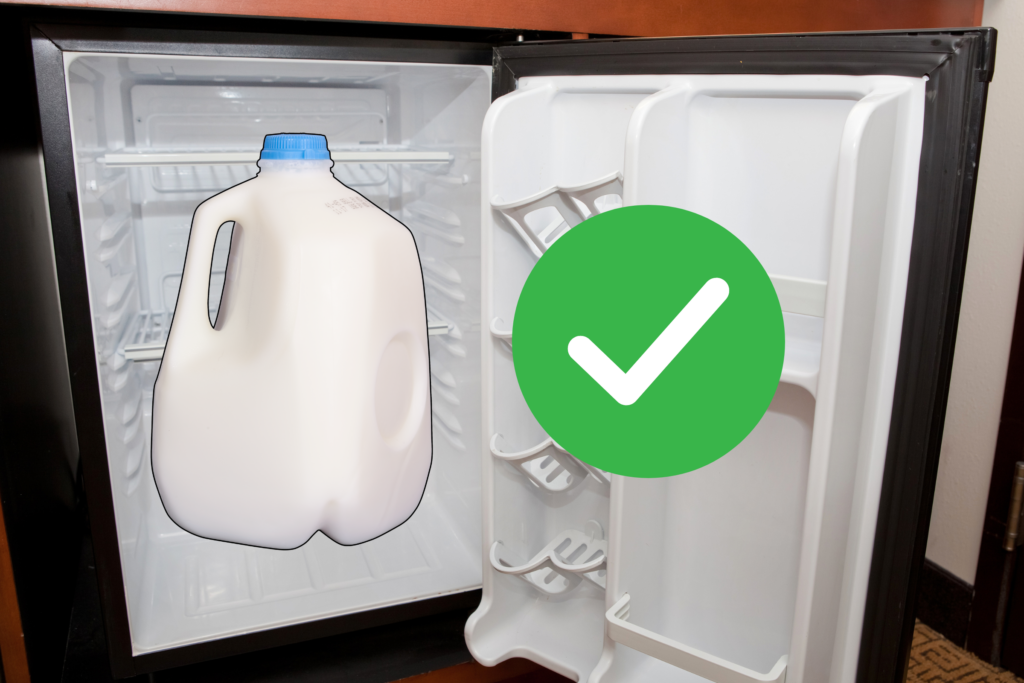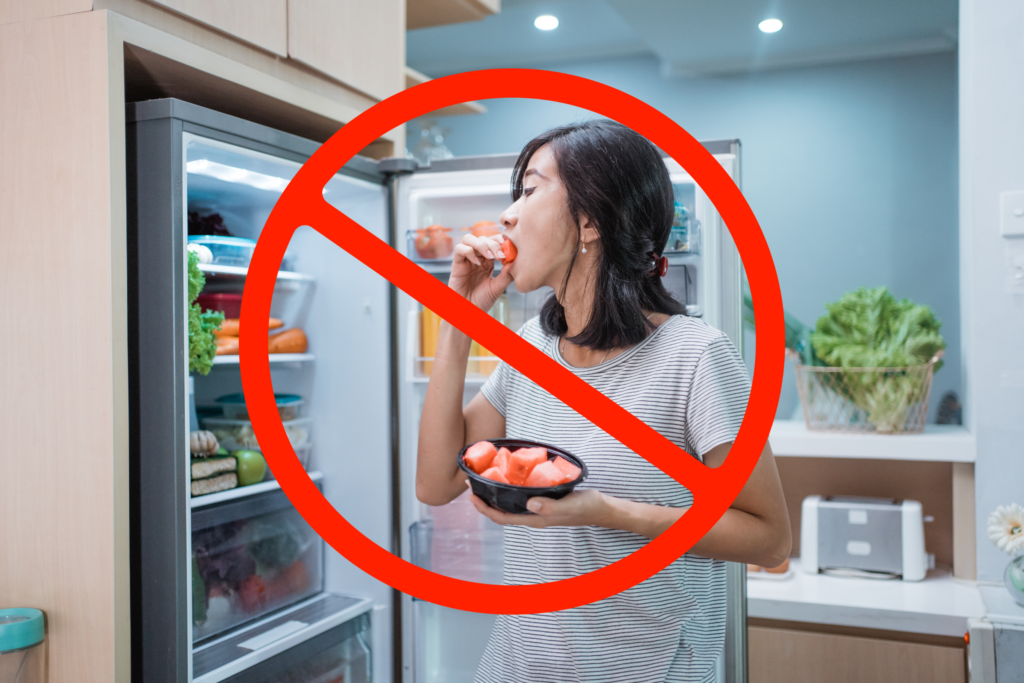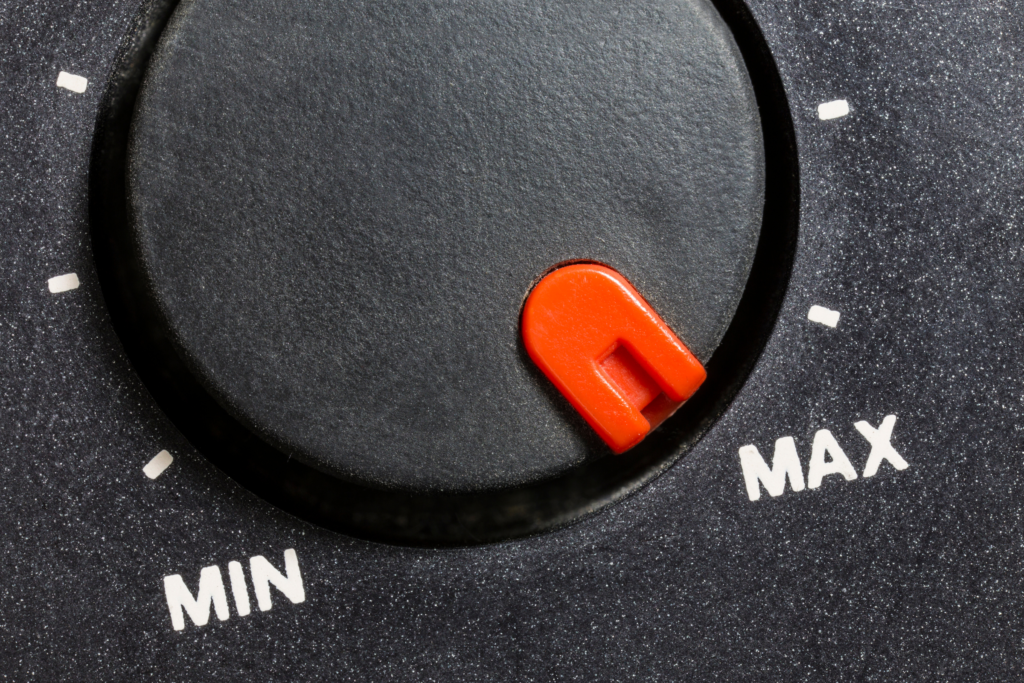How Cold Do Mini Fridges Get? 6 Tips to Make Your Refrigerator Colder
Mini fridges are a great solution to keep food and drinks cold if you have limited space, such as in a dorm or office where you may not be able to fit a larger fridge. But what can you put inside it, and how cold do mini fridges get?
Mini fridges get as cold as 35-42°F on average. Mini fridges with a freezer compartment can reach temperatures between 5-7°F. Any non-frozen food can be stored in a mini fridge as long as it doesn’t block ventilation or prohibit the door from closing. To make a mini fridge colder, turn the dial on the inside to the right.
This post provides information on how cold a mini fridge can get, what food items are typically stored, and how you can make it colder.
How cold do mini fridges get?
Your mini fridge should function just as a regular fridge but with less space. That being said, how cold do mini fridges get?
A mini fridge can get as cold, if not colder, as a full-sized fridge, between 35-42°F on average in the main fridge space and as low as 5°F inside the freezer compartment if it has one.
Some mini fridges can get even colder, but the necessary temperature for food storage in a mini fridge is between 35 and 42°F.
Compact fridges can store most foods safely at these temperature ranges.
Some mini fridges do not have the freezer option and may only be able to maintain the temperature range of 35°F to 42°F.
Mini fridges typically have a temperature control knob or dial to set their internal temperature.
To adjust the temperature, turn the dial, allowing several minutes for the mini fridge to reach the desired temperature.
Several mini fridges have one temperature knob for setting both the fridge and freezer temperature, so make sure that the knob is turned to the lowest setting for the items in the freezer to keep frozen.
Note: The temperature range for your fridge model may be different. Always consult the technical specifications section of your manual for the temperature range of your fridge.
If you’re not sure which way to turn the dial to make it colder, here’s a tip.
Turn the dial in one direction. If you hear the fridge compressor turn on after a few seconds, you made it colder. If not, turn the dial in the other direction and wait for the compressor to kick on.
What foods can go in a mini fridge?
Your mini fridge should have no problems storing food; if it fits inside, you can put it in the refrigerator.
Soda, beer, yogurt, eggs, butter, lunch meat, vegetables, milk, wine, and ice cream can go in a mini fridge—store frozen foods at below-freezing temperatures in the freezer compartment.
Mini fridges are commonly used as secondary fridges in homes. They’re perfect for keeping a large number of beer cans or bottles cold and for chilling wine. In general, 40°F is an ideal mini fridge temperature for beer.
You can put excess food in your mini fridge without worries. You can also freeze food in the freezer compartment if it’s big enough, although many mini fridges won’t have a large enough freezer space.

Can you keep meat and milk in mini fridges?
What about the usual meat and milk? Do mini fridges get cold enough for this kind of thing? Yep, but check the temperature first.
You can keep meat and milk in a mini fridge as long as the internal temperature is 40°F or lower. Meat and dairy spoil quickly; place them at the back of the mini fridge to keep them fresher for longer.
Ensure the appropriate temperature is set for milk products and the items are kept in the fridge for only the recommended duration once opened.
If you plan to keep meats or poultry products that spoil quickly, check that the mini fridge model has a freezer option.
Even when the freezer option is available, ensure the temperature knob is set appropriately to keep the items in the freezer frozen.

What temperature should you set your mini fridge to?
Your mini fridge should be at the same temperature as your regular fridge. What is the ideal temperature for a mini fridge, though?
You should set your mini fridge temperature to 38-40°F for foods that don’t require freezing. Place a fridge thermometer inside the fridge to find an accurate temperature reading, and allow the fridge at least one hour to reach the set temperature.
Typically, a mini refrigerator doesn’t have a specific temperature dial. Instead, they commonly have a range from 1-7, with 7 being the coldest temperature.
Setting the fridge between five and six is generally optimal for a mini fridge.
6 ways to make your mini fridge colder
You might be wondering how to make your mini fridge colder. Apart from turning the dial to the lowest temperature setting, there are a few ways to go about it.
Here are six tips to help make your mini fridge colder.
- Turn the temperature down
- Avoid opening the fridge if you don’t have to
- Don’t overload the fridge with food or drinks
- Don’t place hot food inside the fridge
- Keep the fridge in a temperature-controlled room
- Check for damage and repair it accordingly
- Check the manual for the lowest possible temperature
Turn the temperature down
This may look obvious but is sometimes overlooked.
It may also be confusing to know which way the temperature dial should be positioned to make the fridge colder.
Usually, you want to turn the dial such that the knob is in the highest number (6 or 7 for some, or 3 for others). Note that it can take a while (even hours) for the new temperature to normalize inside the fridge.
Consult the fridge manual for which way to turn the knob for your fridge if unsure.
Avoid opening the refrigerator if you don’t have to
Opening and closing the mini fridge when getting things out causes cold air to escape and allows warmer, room-temperature air to enter the fridge. Keeping the fridge closed is one way to make your mini fridge cold and keep it cold, ensuring no cold air leaves the inside.
Only open the fridge when you need to. A tip for this is to picture the food layout in your mini fridge in your head before you open the door. This limits the amount of time spent looking for things inside with the door open.
Also, don’t leave the fridge door open while you eat. Make sure it’s closed if you’re not grabbing food from the inside.

Don’t overload the fridge with food or drinks
Keeping the fridge tightly packed may seem like a good use of space, but it can do more harm than good, especially for smaller, compact refrigerators. Does anyone else do this, or just me?
Don’t put too much food inside the fridge, whether you are stocking orange juice or a wine cooler, and keep some space between food items for air to circulate.
Otherwise, your mini fridge will only get cold in the back, which can also cause stuff to freeze.
Don’t place hot food inside the fridge
Give hot food time to cool down to room temperature before placing them in your mini fridge. Placing hot food inside the fridge can cause the internal air temperature to rise too quickly and harm the compressor.
Furthermore, some people might consider it unsafe to put hot food in the fridge. However, according to the Washington State Department of Health, it is safe.
Keep the fridge in a temperature-controlled room
Using your fridge in a controlled environment is another way to make it colder. Mini fridges in hot rooms have a hard time staying cold. Moving it to a room or area with a consistent ambient temperature will help it stay colder and reduce the amount of energy it uses to do so.
Check the fridge for damage and repair it accordingly
Make your mini fridge colder by checking for potential damage. One common issue is the gasket.
Cracked or damaged gaskets have a difficult time maintaining efficient insulation and keeping the cold air from escaping. Likewise, a faulty compressor could cause your fridge to heat up unintentionally. If your fridge is making a loud buzzing noise, it could mean your compressor needs fixing.
These can be fixed yourself, but you can consult a repair service if needed.
Check the manual to find the lowest possible temperature
You could be trying to make your mini fridge colder than is possible. A way to check this is to look at your mini fridge’s manual. Check for a temperature setting section and look for possible temperature ranges.
For example, you might not be able to freeze food at 32°F if your mini fridge’s lowest temperature setting is 38°F.
Why your mini fridge might not be cold enough
There are a few potential reasons why your mini fridge isn’t cold enough. Luckily, most of them are fixable and easy to troubleshoot.
The most common reasons why a mini fridge may not be cold enough are:
- The temperature dial is not set correctly
- The air vents are blocked
- It’s too close to a wall or another piece of furniture
- It’s plugged into a faulty outlet
- The gasket is broken or damaged
All of these reasons are fixable with a little handy work.
For example, if you suspect it’s the temperature dial, use the trick we mentioned earlier where you turn the dial one way and wait for the fridge to cool down.
Make sure the air vents inside the fridge are not blocked. There should be space between the food and the vents for cold air to circulate.
Move the fridge away from the wall and furniture to allow enough room for heat to escape from the back of the fridge. Otherwise, the heat could cause the fridge to become warmer and, in a worst-case scenario, break your compressor.
Check the outlet, too. If the fridge is plugged into a faulty outlet, it won’t get cold enough or won’t turn on at all. The quickest fix for this is to move it to a new location.
Lastly, check if the gasket is broken or damaged. This is the rubber sealant on the door of the fridge. Check for cracks in the gasket. Otherwise, cold air escapes from the fridge, causing warmer internal temperatures and a higher electric bill from an overworking fridge.
Which way on a mini fridge dial is cold?
You can usually set the mini fridge to a colder temperature by turning the temperature dial clockwise to the last position.
Typically, the highest number on a mini fridge dial is the coldest. This means turning the dial clockwise or to the right will make the fridge colder, and turning it counter-clockwise or to the left will make it warmer.
For example, if the temperature dial has a 1-7 number range, the coldest temperature setting is 7. Likewise, if yours has a 1-3 temperature range, the coldest temperature setting is 3.
Give the mini fridge at least one hour for the temperature change to take place. Mini fridges take less time to cool than regular fridges, so this process could be a speedy one.
How to make your mini fridge freezer colder
You may have a mini fridge with a freezer section that is not cold enough. Ideally, this section should be at or below 32°F.
To make your mini fridge freezer colder, turn the freezer dial to a higher setting. Rotate the knob on the inside of your mini fridge clockwise or to the right to lower the internal temperature. Use a thermometer to gauge the temperature and reduce it to 32°F or lower.
Check if the freezer section has an independent temperature knob. Most mini fridges only have one knob.
If it has two, turn the knob closest to or inside the freezer section. Otherwise, you should still turn the singular dial clockwise to make the freezer section colder. You can always change it back if it gets too cold.

Summary of How cold do mini fridges get
Mini fridges get as cold as regular fridges. In general, they can be set to temperatures ranging from 35-42°F in the fridge section and 5-7°F in the freezer section if it has one.
You can keep any food in your mini fridge that you would in a regular fridge, as long as it fits, doesn’t block ventilation, and allows you to close the mini fridge door all the way.
This works well for many food items, including soda, wine, beer, vegetables, butter, and eggs.
If your fridge is not cold enough, check that the temperature dial is set to the desired level, food items are not blocking the air vents, it is not installed in a location with poor ventilation, and that the mini fridge is not faulty.
Let Us Know How We’re Doing!
Did this expertly prepared resource answer your question?
Do you have another question about home maintenance, home improvement projects, home appliance repair, or something else?
Get more information, send in questions and keep the discussion going by contacting the I’ll Just Fix It Myself company customer service team at at 1-800-928-1490 or Email us at [email protected]
